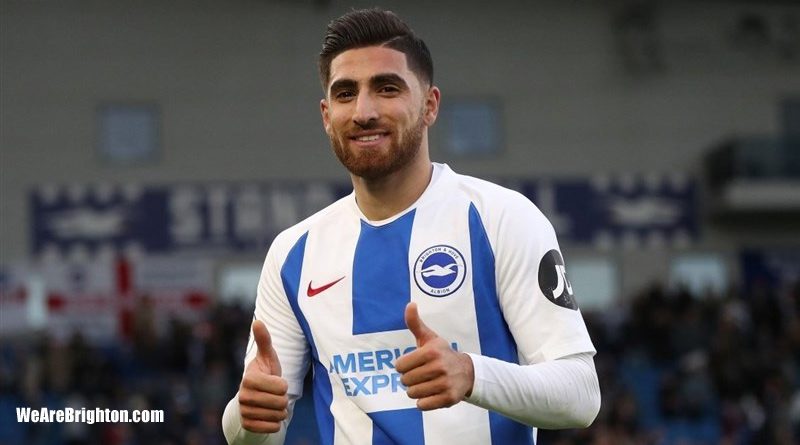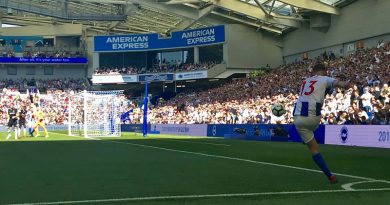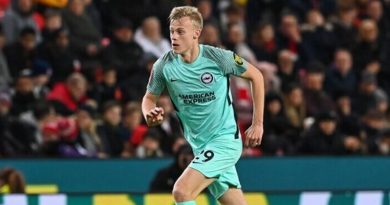What did we learn from Brighton’s 2018-19 season accounts?
Remember when we all thought that the Premier League was the promised land? That reaching the richest league in the world where the roads are paved with gold would set the Albion up financially for life.
Turns it it was all a bit of a myth. Brighton’s 2018-19 accounts are in and they show that in the club’s second season in the top flight, the Seagulls managed to make a £21.2m loss.
That’s a massive swing from the £11.3m profit that Brighton posted in the 2017-18 Premier League season. It just goes to show that even in a division where you can pick up £113.5m in broadcast money alone, clubs are still spending eye watering amounts.
Here’s what we learnt from Brighton’s 2018-19 Premier League balance sheet.
The Albion spent a lot of money on a lot of not-very-good players
Given that virtually every transfer that the club competes these days is undisclosed followed by them telling The Argus that the fee is “significantly less than being reported”, one of the most interesting aspects of the annual accounts is seeing how much we actually spent on players.
For the 2018-19 season, it doesn’t make good reading. £80.9m was spent on new signings, a shocking amount given that only one of the signings made my Paul Winstanley and his recruitment team has actually gone onto establish himself as a first team regular under both Chris Hughton and Graham Potter – Martin Montoya.
That £80.9m includes the then-club record purchase of Alireza Jahanbakhsh, who has contributed a grand total of zero goals and zero assists. Florin Andone has been packed off to Galatasaray after less than a year.
Yves Bissouma has shown flashes of promise but hasn’t really lived up to his £15m price tag. Bernardo has been decent, Montoya solid and Dan Burn has only really established himself since Potter’s appointment.
The total also includes the Lion of Judah Percy Tau and Alexis Mac Allister – neither of whom can currently work legally in the United Kingdom – as well as purchases for Simon Rusk’s development squad.
The Albion spent £57m on new players in the 2017-18 season, meaning that player transfers increased by 42% in 2018-19. What did we get for that additional spend? A two-place drop in the final Premier League table, a club record run of over 12 hours and 15 minutes without a goal and two league wins in five months after Christmas. Ouch.
Player amortisation rose by 70%
Player amortisation is where the transfer fee paid for a player is spread over the length of their contract. Taking Jahanbakhsh for example, the £17m we paid to AZ Alkmaar is spread over the length of his contract, the five-year deal (five years!) signed on his arrival from the Netherlands.
The sheer number of players that the Albion bought last summer has seen player amortisation increase by 70% on the 2017-18 season from £19.3m to £33.2m. That’s still low by Premier League standards however, putting us 15th out of the division’s 20 clubs.
Brighton’s wage bill is over £100m
All those signings combined with new contracts for existing players saw the Albion’s wage bill creep above the £100m mark for the first time to £101.6m.
Lewis Dunk and Shane Duffy both signed fresh five-year deals on the same day in October while Pascal Gross was also rewarded for his stellar first season at the club with an improved contract.
Other players to have extended their deals over the course of these accounts include Beram Kayal, Gaetan Bong, Solly March and Aaron Connolly.
The Albion’s average wage is now around £47,000 per week with the annual bill having increased by 31% on 2017-18. In terms of wages-to-turnover ratio, we’re now spending 70% of our income on paying players and staff.
With the average annual income of a Championship club being £32m last season, you can suddenly why relegation from the Premier League would be a bit of a problem financially, even for a rich benefactor with as deep and generous pockets as Tony Bloom.
Replacing Chris Hughton and his staff was costly
There doesn’t seem to be any way of knowing exactly how much it cost for Bloom to sack Chris Hughton back in May, but it is safe to say that it wasn’t a cheap exercise.
Hughton was only one season into the new three year day that he’d signed at the end of the 2017-18 campaign. To get rid of him, Paul Trollope and Paul Nevin, Bloom would have had to pay up two years worth of contracts on all three of them.
Which just goes to show what a gamble giving managers long-term deals can be. On one hand, you want to protect yourself so that if one of the big boys comes calling and your boss wants to go, you can get a good level of compensation.
On the other, things change so quickly in football that yesterday’s messiah can very quickly become tomorrow’s turnip, leaving you with a costly sacking. All of which makes last week’s decision to award Graham Potter a new five year deal after just four Premier League wins even more surprising.
Speaking of Potter, prising him and his coaching staff from Swansea City won’t have been cheap either. Combined with the payoff to Hughton, the change in managers could well be one of the major factors in last season’s loss.
Television rights account for 80% of the Albion’s income
Sky and BT Sports may be complete bastards when it comes to rearranging fixtures for the most inconvenient of times, but broadcast money from those two companies and the sale of overseas rights accounts for around 80% of the Albion’s income.
£113m of Brighton’s £143m turnover was from television. Just remember that next time you start kicking off at Arsenal away being an 8.15pm kick off on a Thursday night.
Matchday revenue remained the same
Matchday revenue at the Amex remained the same in 2018-19 as 2017-18, bringing in a total of £18.5m. The Albion would probably have expected an increase in revenue here given that season ticket prices rose by an average of 4% across the stadium, not to mention the increase in the cost of general sale tickets.
That the figure remains flat suggests that people are now spending less inside the stadium than in 2017-18. This will hardly come as a surprise to anyone who has stopped buying fizzy drinks since some idiot decided that a bottle with a lid was as dangerous as a nuclear weapon.
What’s the point in spending north of £2 on a Fanta, only to have it knocked all over the floor within a couple of minutes? Unfortunately, no figures were released to reveal how much revenue a £3.20 bag of Starbust brings in.
Paul Barber is a very rich man
Paul Barber is Brighton’s highest-paid director, taking home a cool £1,496,000 over the course of the 2018-19 season. That represented an increase of 6.3% on his pay in 2017-18, which probably came as a result of his promotion from CEO to Deputy Chairman.
Since arriving at the Amex in the summer of 2012 from Vancouver Whitecaps, Barber has been paid a very handsome sum of £6.4m. Not bad work if you can get it.
Brighton would be buggered without Tony Bloom
If you’re ever in any doubt about just how much Albion fans owe Tony Bloom, then this eye watering figure should give you an indication.
By the end of the 2018-19 season, the Albion owed Bloom £271m, up from £222m a year previously. This additional £49m pumped in by the chairman went towards player sells and trying to cover losses. Goodness knows where we’d be today without him.




